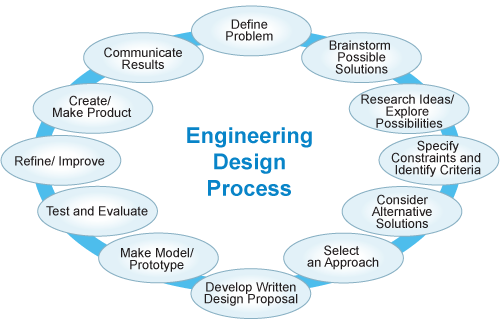The Engineering Design Process

Teams use the engineering design process to follow a systematic approach to solving a problem.
You have received your challenge-and it is a big one! Before starting, take a few minutes to consider how you will proceed. When teams set about tackling a problem, they use a systematic approach to problem solving. One such approach is the engineering design process.
 The Design Process
The Design Process
Watch the following videos to learn about the process and approach engineers use to solve problems. Think about what they consider when planning and developing their solutions. How can you apply their process to your challenge?
> Engineering
![]()
(from NASA Goddard Space Flight Center)
Click a movie player format on the right to view the video.
> Perfect Fit
![]()
(National Defense Education Program: Lab TV)
Scroll to 3rd video.
Beginning on page 4 of your Engineering Portfolio, there is an expanded version of the engineering design process that engineers use. Complete step 1 - Define the Problem - and continue to use your Engineering Portfolio to guide your work as you move forward.


